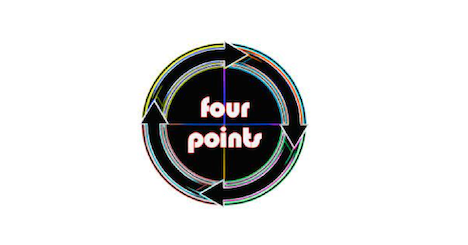'These Spaces Were Not Designed For Us'
Pease's 'Future In Our Eyes' featured at YAM
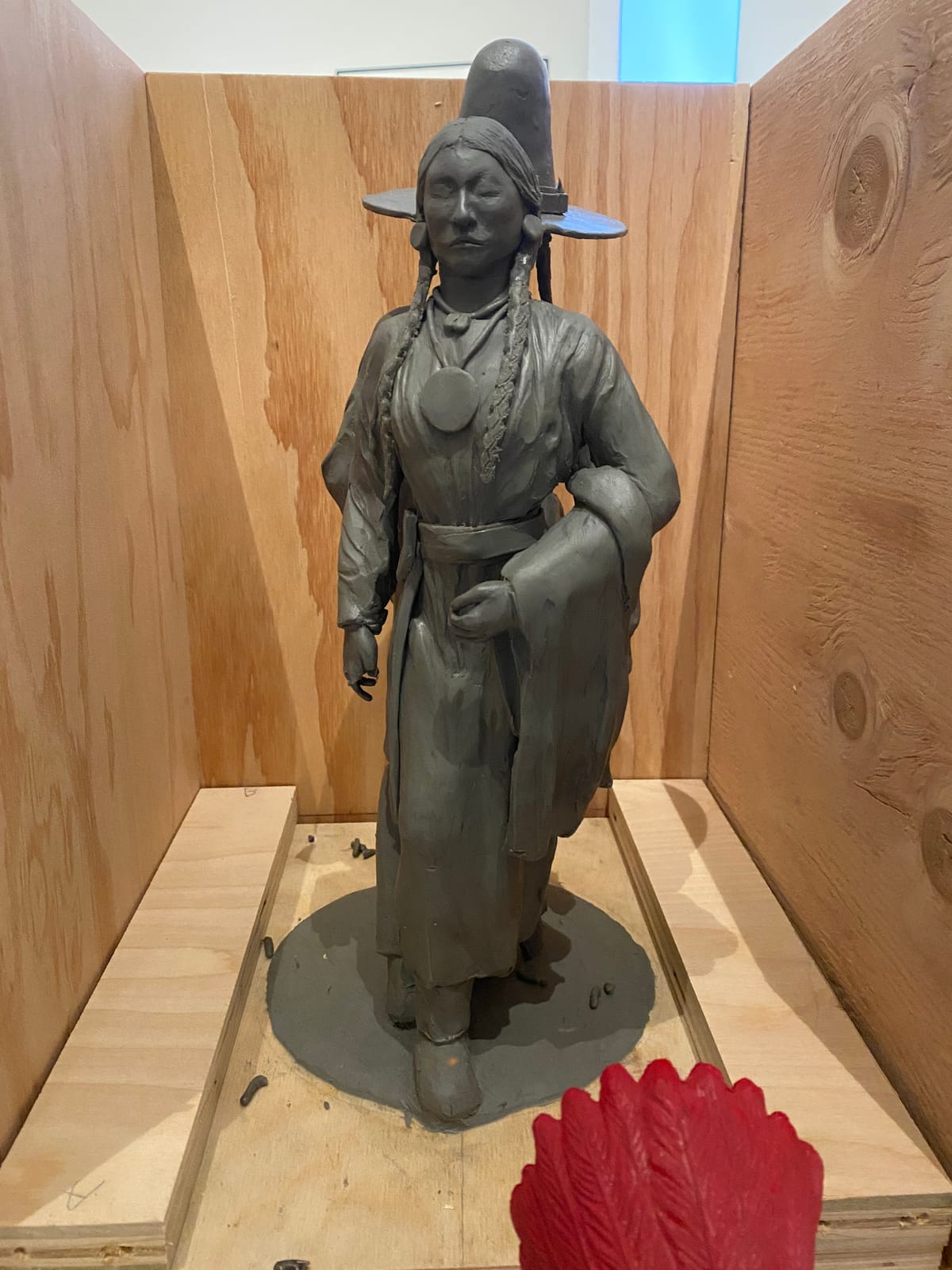
Ben Pease’s 8-foot red statue “Future In Our Eyes” has been attracting attention in the front window of the Yellowstone Art Museum, but that is nothing new for the Northern Cheyenne/Crow artist. He is known across Montana and Indian Country for his bold, eye-catching work.
Pease spoke to a crowd of roughly 75 people at the YAM on March 14. Many spectators came just to view the statue in the front window of the YAM window. With a captivated audience listening to Pease speak on his artistic process, Pease mentioned various perceptions of Native art in the Western world, with humorous stories and examples of modern Crow reality that made one think a bit deeper.
Kimberly Gaitonde, curatorial assistant for the Yellowstone Art Museum, spoke of the museum's excitement in featuring Pease again.
“Ben is such a prolific artist here in Billings,” Gaitonde said. “It's really been such a treat to have him here.”
Gaitonde spoke of how the YAM in working with Pease, recognize and commend him on his bringing together the community and celebrating together when an event takes place.
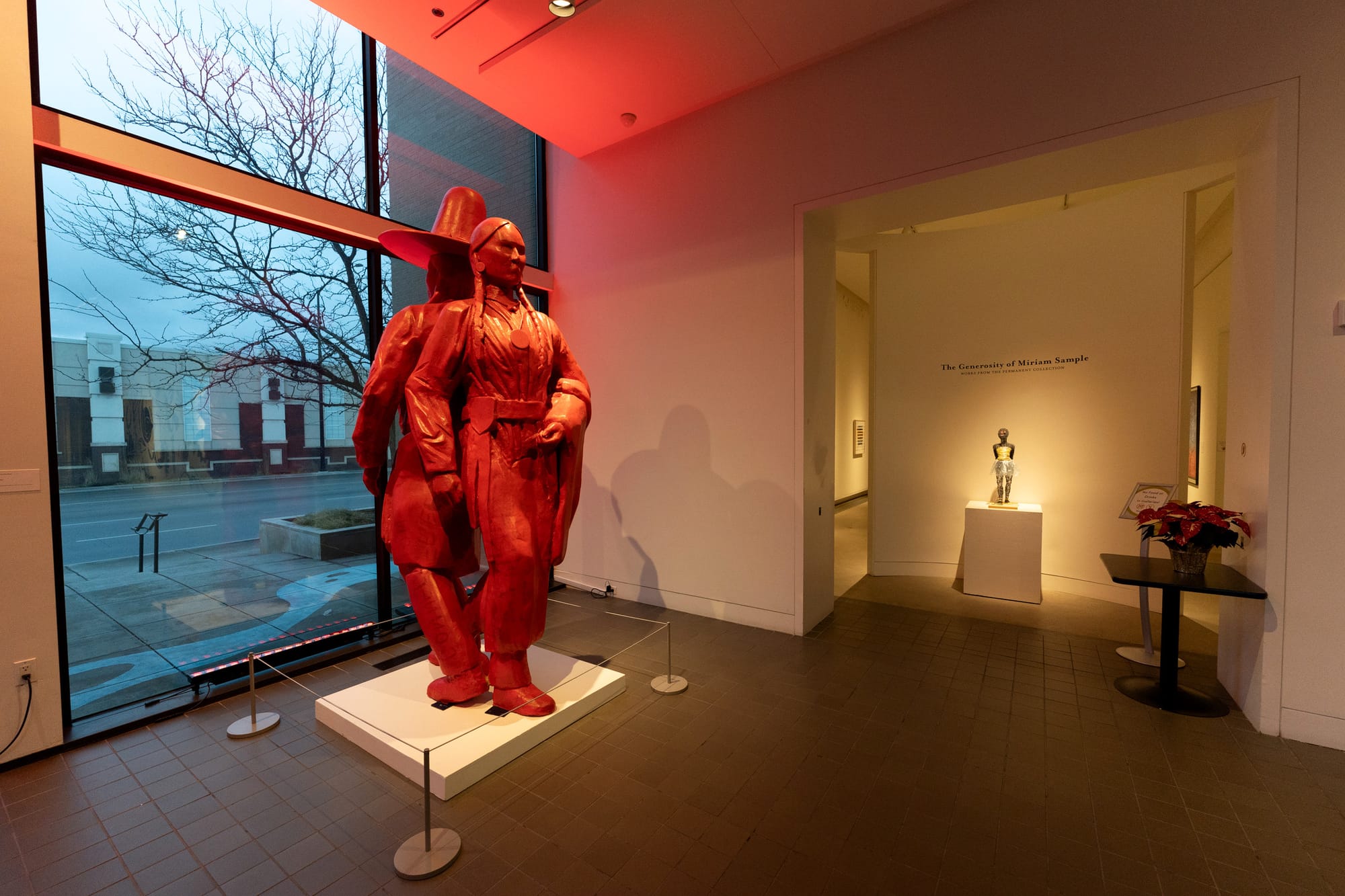
“It’s been a really popular piece in general,” Gaitonde said, yet the placement of the statue itself also carries some symbolism. “One looking out onto the land, and the other looking back into the building…It carries a lot of symbolism.”
The statue, which was featured in the traveling museum exhibition Apsáalooke Women and Warriors, was created by Pease and was an area of many firsts experienced he reported.
Since he was first approached in 2019 by Nina Sanders and the Chicago Field Museum of Natural History, the main bodies behind Apsáalooke Women and Warriors, “Future In Our Eyes” had quite a unique journey from its first idea. Yet, the complexities of bringing a vision to life, is one that Pease is well aware of with the Crow culture.
In reflecting back to the creation of medicine shields, bringing a vision out of one's mind, and giving it the physical tangibility to bring it to life, is often a time-consuming process to gather materials and prepare them. Pease spoke of being given one of his grandfather’s ceramic creations, and being able to draw inspiration from that, he began to work on bringing the tall red statue to life.
Initially, created on a small clay version, with over 150 hours of sculpting and creating intricate details in his initial design, Pease spoke of how finding the different materials to make the 8-foot tall statue was a trial-and-error process. Moving from foam, to fiberglass, to clay and other materials, scanning the scale model on a 3D scanner to get proportions correct, and even the layout of the materials itself was all a part of the creative process of breathing life into an accurate rendition of the statue from the small-scaled sculpture.
“It wasn't easy because the show was going to open in two weeks,” Pease said, reflecting on how his making the statue almost came down to the final wire while working in the literal ceiling in the Chicago Field Museum.
After it was finished, the statue was revealed to the public in Chicago at the Field Museum when the exhibition was opened to the public in March of 2020, where it began its four-year journey to return back to Crow country. After its year-long stay in the Field Museum, “The Future In Our Eyes” was packed up, shipped out, and returned home to Crow country briefly when the exhibition came to the Museum of the Rockies in Bozeman.
After its time back in Montana, the statue moved for the third time to the Carnegie Institute in Pittsburgh where it was featured in its Carnegie Museum of Natural History. After its third and final debut in Pittsburgh in 2023, it has now come full-circle back to Billings, where it is seen by hundreds of people who make their daily commutes past the YAM.
After its installation in the YAM, “The Future In Our Eyes” now watches over the crowds, settling nicely back within the city limits of Billings, where Pease now calls the growing area home with his family, where he continues to create, conceptualize, and perfect his craft.
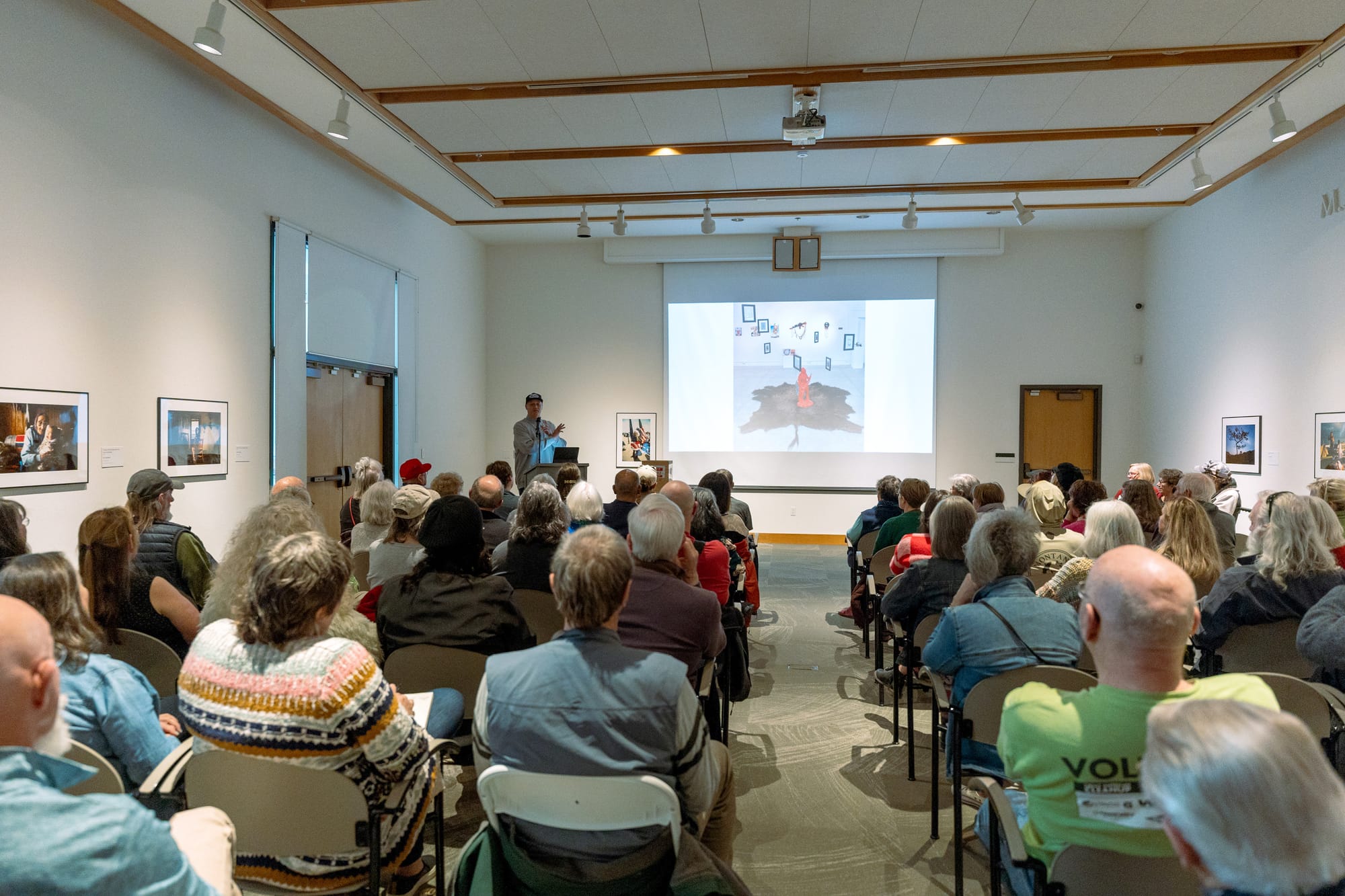
“It was a labor of love,” Pease said. “It's titled ‘The Future In Our Eyes’, because this is what I am thinking about; what does it mean to have culture in communities, organizers, in our language and our history?”
Pease spoke on how the representation of the man and woman stepping out of each other is in reference to the traditional Crow styled “hourglass” design.
“If looking at them from the top, they’re both stepping out into the world and coming from the same place, man and woman and everyone in between.”
Pease said art is an area, that if accessed in such a way, it allows people to free their inhibitions to truly live even for the moment, and see the world with different eyes.
“Creating a platform for Native art, and even so being a Native artist in a predominantly non-Native world often comes with a challenge, in that Native perceptions and those who are not within Native communities often do not meet halfway,” he said.
Pease mentioned an experience sitting in the solitary confinement cell of the original jailhouse under the art museum. Pease discussed how sitting in that space, opened his mind to bigger questions, and realizations. The spaces and institutions such as art museums and galleries, were not originally designed with native artists in mind. Yet, within his art, Pease utilizes accents of artistic concept to bring to the forefront, the statement of the whole piece itself, in order to bridge the gaps between perceptions. Pease referenced how the use of symbolism in each piece comes from various experiences in his life.
Pease showed a photo slide featuring a rez car with 48 arrows shot inside it representing the 48 contiguous states of the United States. Pease spoke of how this painting was inspired from an experience at the Sheridan Days Parade, in which the juxtaposition of a rez car against the background of the celebrations in Sheridan, provided the perfect artistic composites to create such a striking piece.
“I saw this rez car, just perfect, beat up, and just…beautiful”, Pease laughed alongside the audience.
“Ben's lectures are very widely celebrated and well attended by so many people,” Gaitonde said. “He speaks to his experiences so transparently and that is crucial for people in interacting with the artists to understand better.”
As Gaitonde puts it, when Pease says what he says, “it creates that excitement of ‘what is he going to do next?”
Another sculpture featured alongside “The Future In Our Eyes”, is a “found-object” collaboration between Pease and other artists called “Not Your Cultural Epithet.” It is a statement piece with various colloquial terminologies uttered over the annals of time to Native peoples written all over the sculpture.
“The way that I express who I am today, is different from my mother and fathers generation, and their mother and father.” Pease spoke, “We’re moving so fast the way we tell stories,” Pease said while mentioning just how even something as simple as photos has changed from the days of disposable film.
Pease mentioned said in finding his own voice within art he spent a significant amount of time thinking about the places that Crow Indians used to make medicine, and the spaces in which spirituality was at the forefront. This practice also in keeping with Crow traditions, taking a moment to reflect and offer prayer before committing to anything, was a stepping stone for Pease in many ways to achieving that final step.
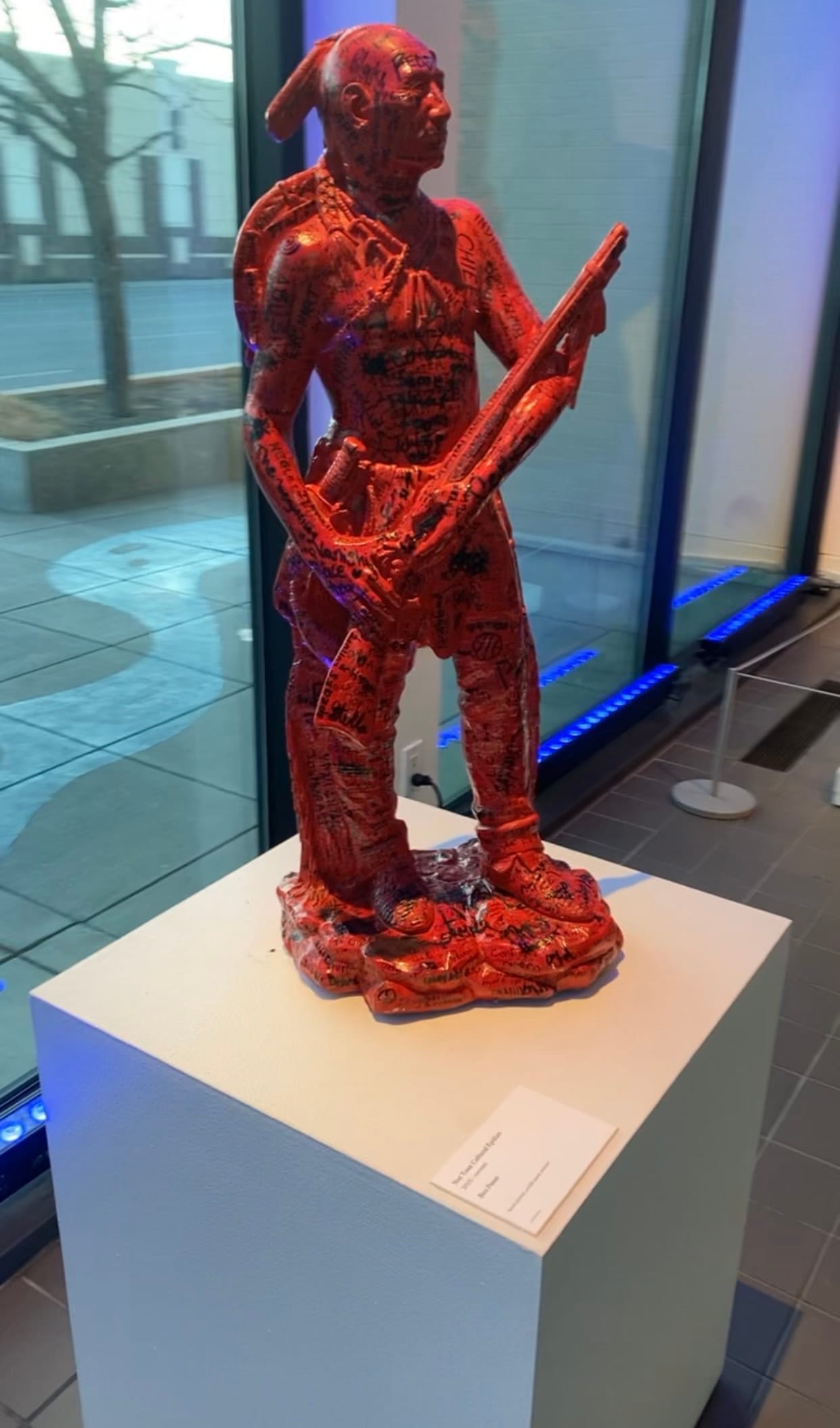
Kimberly Gaitonde said it’s YAM’s intention to invite more Native artists to collaborate with and create programs for the Billings area.
“The Museum does have plans to continue collaborating with Native artists and giving spaces featuring those artists in residency here at the YAM,” said Gaitonde.
She said her wish is to continue exhibiting art from Native artists in the region and to continue fostering those relationships, to give both fine art and Native art a common place to become one.
“We are always looking for ways to uplift our artists, and support them, and collaborate with them in a way that lifts them up in whatever way that they need,” said Gaitonde.
The Billings area itself, although rich in history, has a very painful past, particularly for the Crows who once buried their loved ones in the sandstone cliffs above what is now The Mint car wash alongside North Seventh Avenue.
Pease spoke of the town of Coulson, how their Coulson cemetery gives way to an older Crow burial ground. Over 1,000 Crow people lost their lives in a horrific smallpox breakout in 1837, killing an entire camp of men, women, children and elderly. The area is know as Aashúuchoosalaho / Where There Are Many Human Skulls to the Crow people.
Only a short distance away, where the First Interstate Arena now stands, the actual “Sacrifice Cliffs” are found. In a direct response to the discovery of their now wiped-out camp, two young Crow men returning from a hunting party, with their eyes reddened from the tears of grieving from losing their entire campsite, blindfolded a white horse and rode off the cliffs in a suicide pact. Tribal elders still recall their grandparents' stories of seeing hundreds of painted hides and trade blankets, wrapped around the bodies of the dead, scattered amongst the trees even into their childhood, all while the town of Coulson and eventually Billings, sprung up around them.
Fast forward to the present day, what was once a revered burial ground to the Crow Indians is now a center for city recreation. Yet this juxtaposition offers a unique chance for the Billings community to begin repairing relationships with its Native peoples. By featuring such a well-known and influential local artist, one hopes that in the future, more native artists using the inspiration of Pease come forward into the world and let their light shine brightly in an often dark and cloudy-skied world above Billings.
To see “The Future In Our Eyes” in person head to 401 N 27th St A, Billings, MT or for any information on the hours of the Yellowstone Art Museum, please visit their website.
